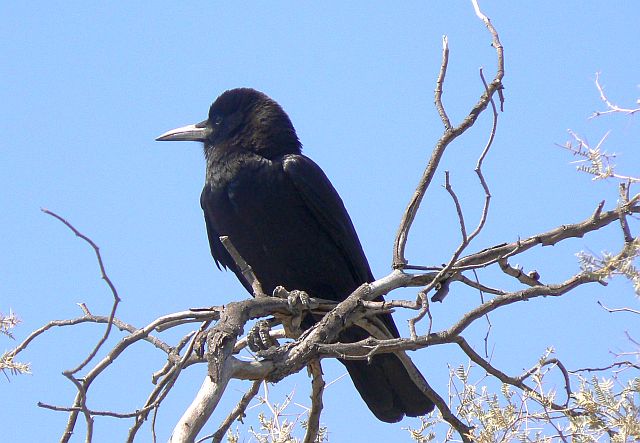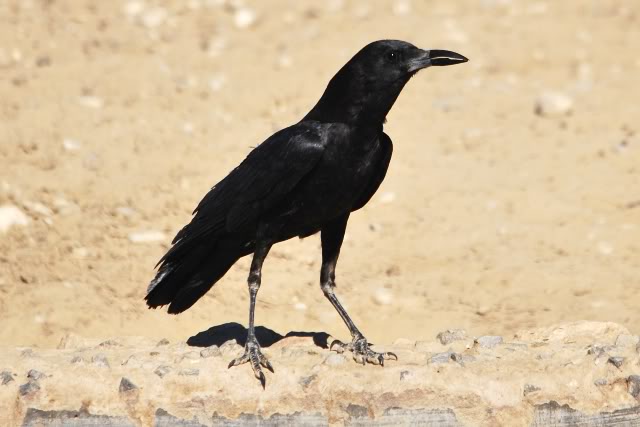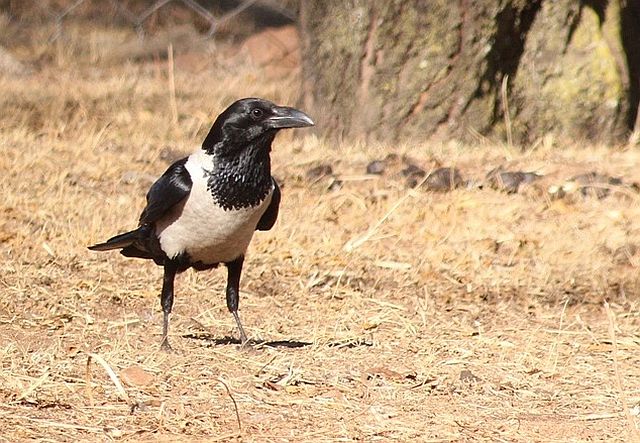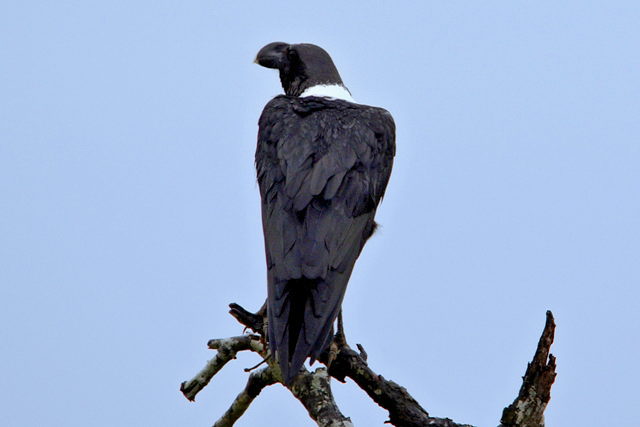Order: Passeriformes. Family: Corvidae

Description
The Cape Crow has a height of 50 cm and weighs around 500g. Only all-black crow in region. It is completely black with a slight gloss of purple in the feathers. The slender pointed bill is black. It has black legs. The eyes are black. Sexes alike.
Juvenile is browner than adult, lacking the glossy, blue-black plumage of adult.
Similar species: Larger than the House Crow, and differs in being uniformely glossy black (without grey or greyish brown nape, mantle and breast) with a long slender, slightly decurved bill.
Distribution
It has two separate populations - one in East Africa and the other from Angola to southern Africa. Here it is common in Zimbabwe, Botswana, Namibia and South Africa, largely absent from Mozambique.
Habitat
It generally favours open habitats with scattered trees, such as open savanna woodland and grassland, but it is also common in semi arid shrubland, alien plantations and farmlands.
Diet
Omnivorous, feeding on a wide range of animals and plants. It mainly forages on the ground, searching the bases of plants and responding to any temporary abundance of food, such as termite alate emergences.
Breeding
Monogamous. The female does most of the nest construction, while the male collect the materials. It consists of a large cup of sticks and twigs, thickly lined with soft material such as feathers, fur, sheep's wool, dry dung, string and cloth. It is usually placed in the sleder branches of a tall shrub, especially Rhigozum obovatum (Granaatbos) in the Karoo, but also in Acacia and Eucalyptus trees, utility poles and rarely cliff edges. It lays 1-6, usually 3 eggs, which are incubate by both sexes for about 18-19 days. The chicks are cared for by both parents, leaving the nest at about 26-39 days old and becoming independent roughly 6 months later.
One of main hosts of Great-spotted Cuckoo; up to 10% of nests parasitised.
Call
Loud harsh kraa, kraa, and a mixed repertoire of deep liquid notes and various gurgling sounds. Listen to Bird Call.
Status
Resident and fairly common throughout most of region. Usually in permanently territorial pairs. Sometimes solitary and occasionally in large groups of up to 50 birds during non-breeding season. Roosts communally in trees (sometimes hundreds of birds), also on top of telephone poles.




 © Mel
© Mel © Toko
© Toko © Dewi
© Dewi © Amoli
© Amoli © Mel
© Mel © Sharifa
© Sharifa